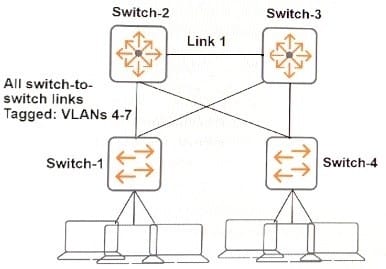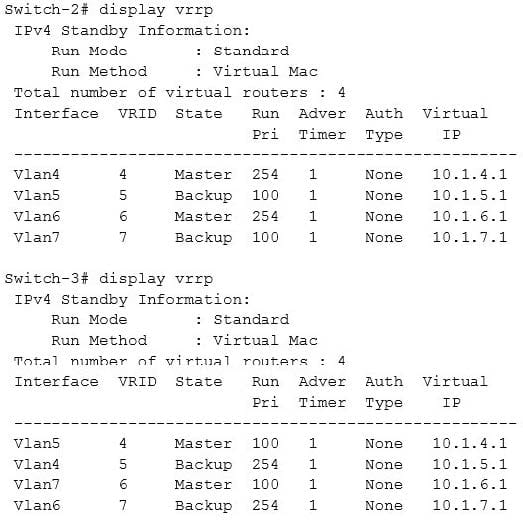
HPE6-A45 Exam Questions & Answers
Exam Code: HPE6-A45
Exam Name: Implementing Aruba Campus Switching solutions
Updated:
Q&As: 168
At Passcerty.com, we pride ourselves on the comprehensive nature of our HPE6-A45 exam dumps, designed meticulously to encompass all key topics and nuances you might encounter during the real examination. Regular updates are a cornerstone of our service, ensuring that our dedicated users always have their hands on the most recent and relevant Q&A dumps. Behind every meticulously curated question and answer lies the hard work of our seasoned team of experts, who bring years of experience and knowledge into crafting these premium materials. And while we are invested in offering top-notch content, we also believe in empowering our community. As a token of our commitment to your success, we're delighted to offer a substantial portion of our resources for free practice. We invite you to make the most of the following content, and wish you every success in your endeavors.

Download Free HP HPE6-A45 Demo
Experience Passcerty.com exam material in PDF version.
Simply submit your e-mail address below to get started with our PDF real exam demo of your HP HPE6-A45 exam.
![]() Instant download
Instant download
![]() Latest update demo according to real exam
Latest update demo according to real exam
* Our demo shows only a few questions from your selected exam for evaluating purposes
Free HP HPE6-A45 Dumps
Practice These Free Questions and Answers to Pass the Aruba Certified Switching Professional (ACSP) V1 Exam
Refer to the exhibits. Exhibit 1.

Exhibit 2.

The company wants to minimize congestion on Link 1.
Which spanning tree implementation meets this goal?
A. Instance 1 = VLANs 4-5 Instance 2 = VLANs 6-7 Switch 2 instance 1 priority = 0 Switch 2 instance 2 priority = 1 Switch 3 instance 1 priority = 1 Switch 3 instance 2 priority = 0
B. Instance 1 = VLANs 4,6 Instance 2 = VLANs 5,7 Switch 2 instance 1 priority = 0 Switch 2 instance 2 priority = 1 Switch 3 instance 1 priority = 1 Switch 3 instance 2 priority = 0
C. Instance 1 = VLANs 4,6 Instance 2 = VLANs 5,7 Switch 2 instance 1 priority = 0 Switch 2 instance 2 priority = 1 Switch 3 instance 1 priority = 0 Switch 3 instance 2 priority = 1
D. Instance 1 = VLANs 4-5 Instance 2 = VLANs 6-7 Switch 2 instance 1 priority = 0 Switch 2 instance 2 priority = 1 Switch 3 instance 1 priority = 0 Switch 3 instance 2 priority = 1
Network administrators need to configure a BGP neighbor on an AOS-Switch. What defines the neighbor as an iBGP neighbor?
A. It has BGP synchronization enabled.
B. It has an AS number in the range of 64512 to 64535.
C. Its update source is set to a private company IP address.
D. Its remote-AS is the same as the AOS-Switch BGP AS.
Refer to the exhibits. Exhibit 1

Exhibit 2 Network administrators are alerted to high interface utilization on a switch by a management solution. They examine the utilization on the uplink interfaces several times an hour during problem times. The exhibit shows output typical of times of congestion. The administrators want to allocate bandwidth fairly and reduce congestion on the uplinks.

What could help meet these requirements?
A. a per-queue rate limit on interfaces 1 and 2
B. an outbound rate limit on each edge port
C. a broadcast rate limit on each edge port
D. an outbound rate limit on interfaces 1 and 2
A customer wants access layer switches that support routing, ACLs, backplane stacking, and Smart rate ports. The customer asks about Aruba 5400R z 12 switches.
Which Aruba Switch model would better meet the customer's requirements?
A. 2530
B. 2930F
C. 3810
D. 8400
OSPF Area 1 has two ABRs. One ABR is configured with this range for Area 1: 10.10.0.0/16. The other ABR is configured with this range for Area 1: 10.10.0.0/17.
Which type of issue occurs due to this mismatch?
A. The ABRs lose adjacency entirely and cannot route traffic between each other at all.
B. The ABRs create a discontiguous area and disrupt intra-area routing between devices within Area 1.
C. The ABRs advertise routes inconsistently, and they could potentially introduce a routing loop.
D. The ABRs lose adjacency in Area 1 and must route all traffic to each other through Area 0.
Viewing Page 1 of 3 pages. Download PDF or Software version with 168 questions

